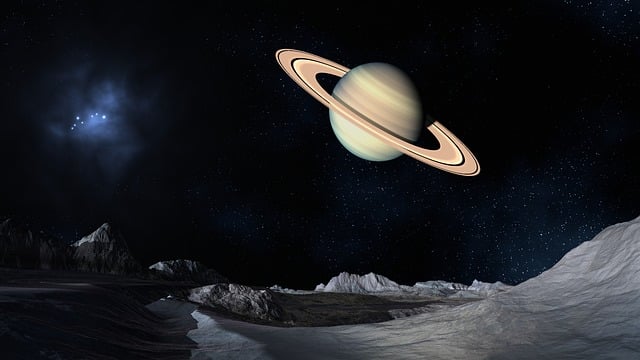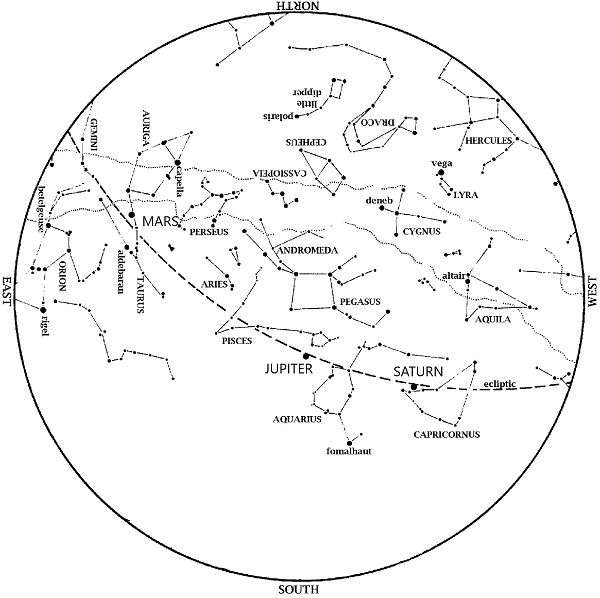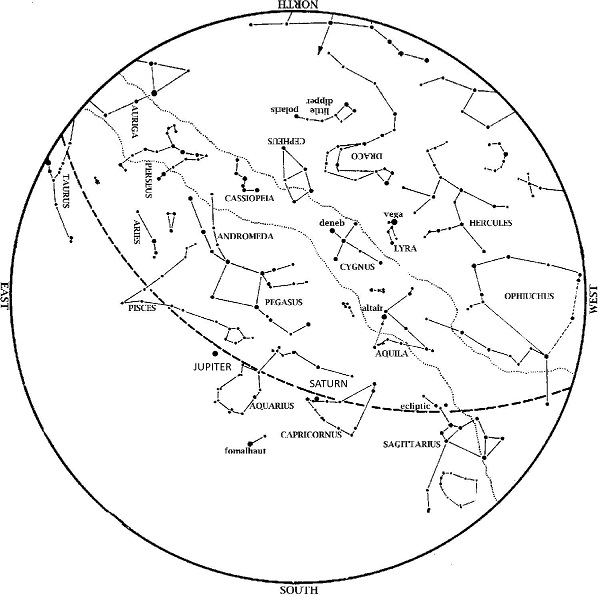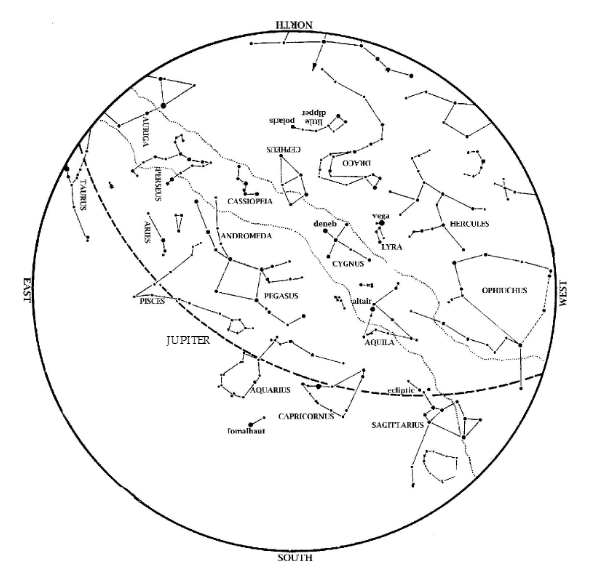Venus remains in the west at dusk. It outshines everything but the Sun and Moon, so you can begin observing it during deep twilight. As August ends, Venus begins to approach Saturn.
Saturn is now shining in the south/southwest at dusk. Although not as bright as Venus, it does outshine the stars around it, so you can’t miss it. Jupiter is higher in the morning sky this month. Look for it in the east at dawn.
Mars, much dimmer than Jupiter, now pulls away from it in the morning sky. Look for it to Jupiter’s lower left in the morning sky at dawn.
The Big Dipper is to the left of the North Star, with its handle pointing up. From that handle, you can ‘arc to Arcturus’ and then ‘speed on to Spica’; those stars are in the south at dusk. Leo, the Lion, sets in the west at dusk.
Antares, brightest star of Scorpius, the Scorpion, is in the south, with the ‘teapot’ of Sagittarius to its left. The Summer Triangle is high in the east. The stars of summer are here. Meanwhile, the Great Square of Pegasus begins to rise in the east, indicating that fall is near.
Moon Phases in August 2013:
New August 8, 2:15 am
1st Quarter August 15, 10:19 pm
Full August 22, 1:15 pm
Last Quarter August 29, 12:44pm
The Perseid meteor shower peaks on Monday morning, August 12, as it does every year in mid-August. As always, we see more meteors in the pre-dawn hours, because that’s when Earth rotates us into the meteor stream. The Perseids have a broad peak, meaning that quite a few meteors are visible for a few days before and after the best date.
Thus, you’ll still see quite a few meteors if you come to George Observatory on Saturday night, August 10 and stay into Sunday morning, August 11. We’ll be open until 2 am, long enough for the shower to get good. Keep in mind that this is a meteor shower with, on average, one meteor per minute, and not a meteor storm, which would average about one meteor per second.
On most clear Saturday nights at the George Observatory, you can hear me do live star tours on the observation deck with a green laser pointer. If you’re there, listen for my announcement.
To enjoy the stars in any weather from the comfort of the HMNS Planetarium, click here for a full schedule.







